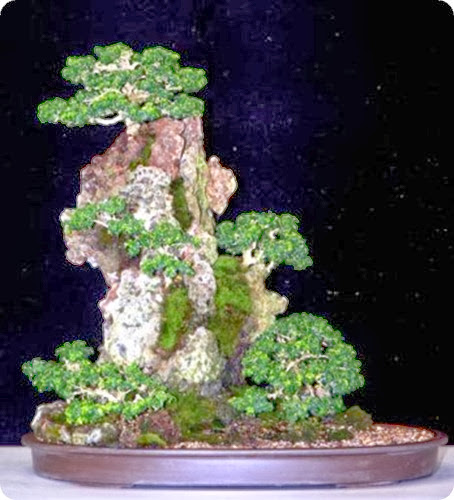Where do I put it?
Pines and junipers go in full sun, while deciduous trees, such as maples and elms, will do well in a spot that gets some shade from late afternoon sun. Indoor, or tropical, trees will want quite a bit of sun.
They are used to bright, humid climates found near the equator. If the Summers where you live are hot and arid, you must be careful that your trees do not dry out. You will want to give all your trees dappled sun during Summer. Azaleas will do well in a spot that gets bright sun until noon, with plenty of humidity. Last, it is a good idea to set your trees on a low bench about two feet off the ground. This will keep many of the bugs out of the pot and keep the tree from accidentally being kicked or stepped on. Plus, it looks nice.
How often do I water it?
In general, you should water your tree when the top of the soil is dry. Each tree uses water at a different rate, so do not water all your trees at once, unless they truly need it. Use a watering can or hose attachment that will cast a soft, rain-like spray so that you do not blast the soil out of the pot.

How do I train my bonsai?
A bonsai is not, in many cases, simply a dwarf form of a tree. A bonsai has been dwarfed by training. Training involves pruning, wiring, watering, repotting, fertilizing, etc. As you progress in learning about your tree, you will gradually become more aware of all the aspects of training and their use.
For now, trim away any branches and leaves that do not add to the tree you are trying to produce. In order to do this, you must have a good idea of what it is you are trying to do. Take a picture (or draw one) of your tree before you begin work and draw a second, this time of how you want the tree to look in the future. You may or may not keep to this design, but it is important nonetheless to have an idea of the direction you want to take.
Good Trees for Beginners
Good outdoor (temperate climate) trees for beginners include Green Mound juniper, Trident maple and Chinese elm. These are very forgiving trees, and can adapt to most environments, with proper care. Good indoor (tropical climate) varieties include Ficus and Schefflera. These grow well in lower light conditions found in many homes. They still need as much light as you can supply, however.
Indoor or Outdoor?
Some people mistakenly believe that all bonsai can be kept indoors. This is not really surprising, because bonsai are usually displayed indoors. The truth is, however, all bonsai do best when kept outdoors year-round. Most bonsai are temperate-climate trees and need to undergo seasonal changes just like their non-dwarfed cousins in your yard. These temperate climate trees can certainly be displayed indoors during any season, but not for more than a few days. This includes tropical, or "indoor", varieties. Naturally, tropical trees can only be kept outdoors in tropical climates, but outdoors is where they will grow best. Tropical trees can be kept indoors in temperate climates during winter with extra care and light.
If you liked this article, subscribe to the feed by clicking the image below to keep informed about new contents of the blog:


0 commenti :
Post a Comment